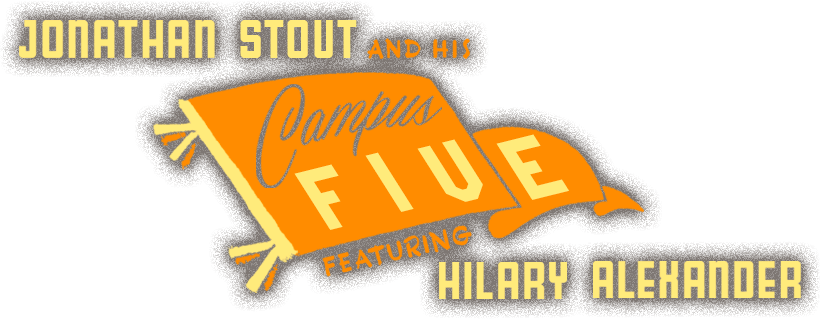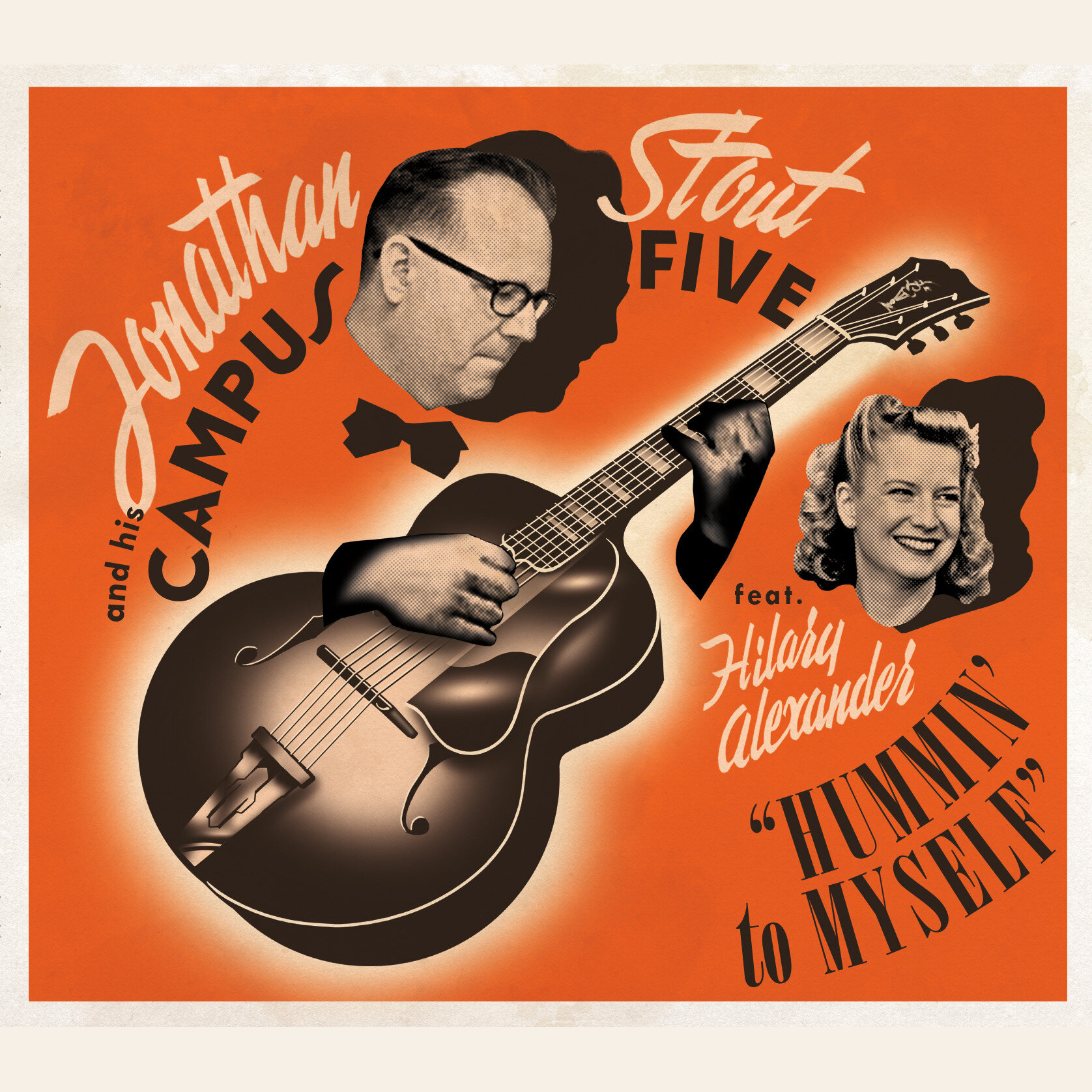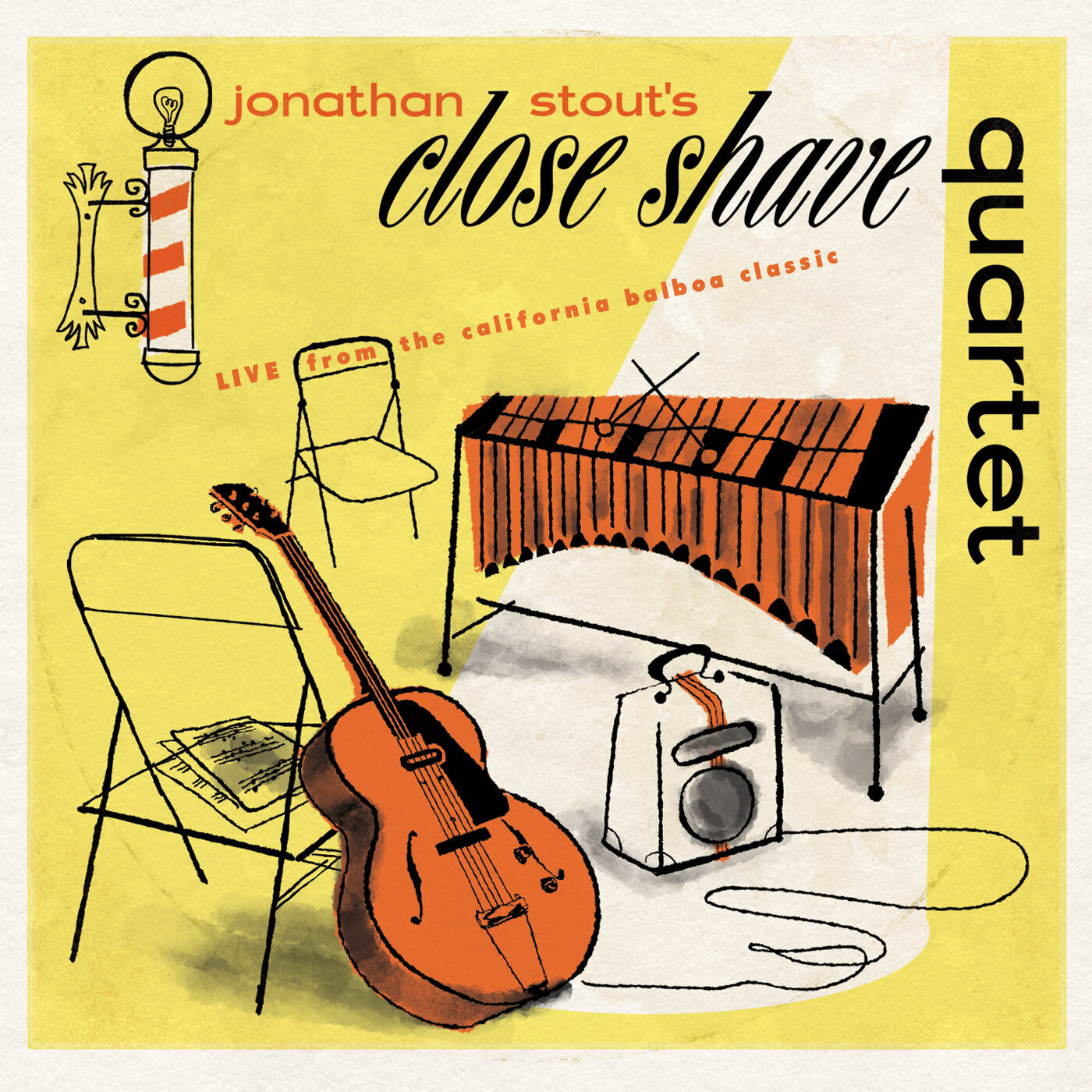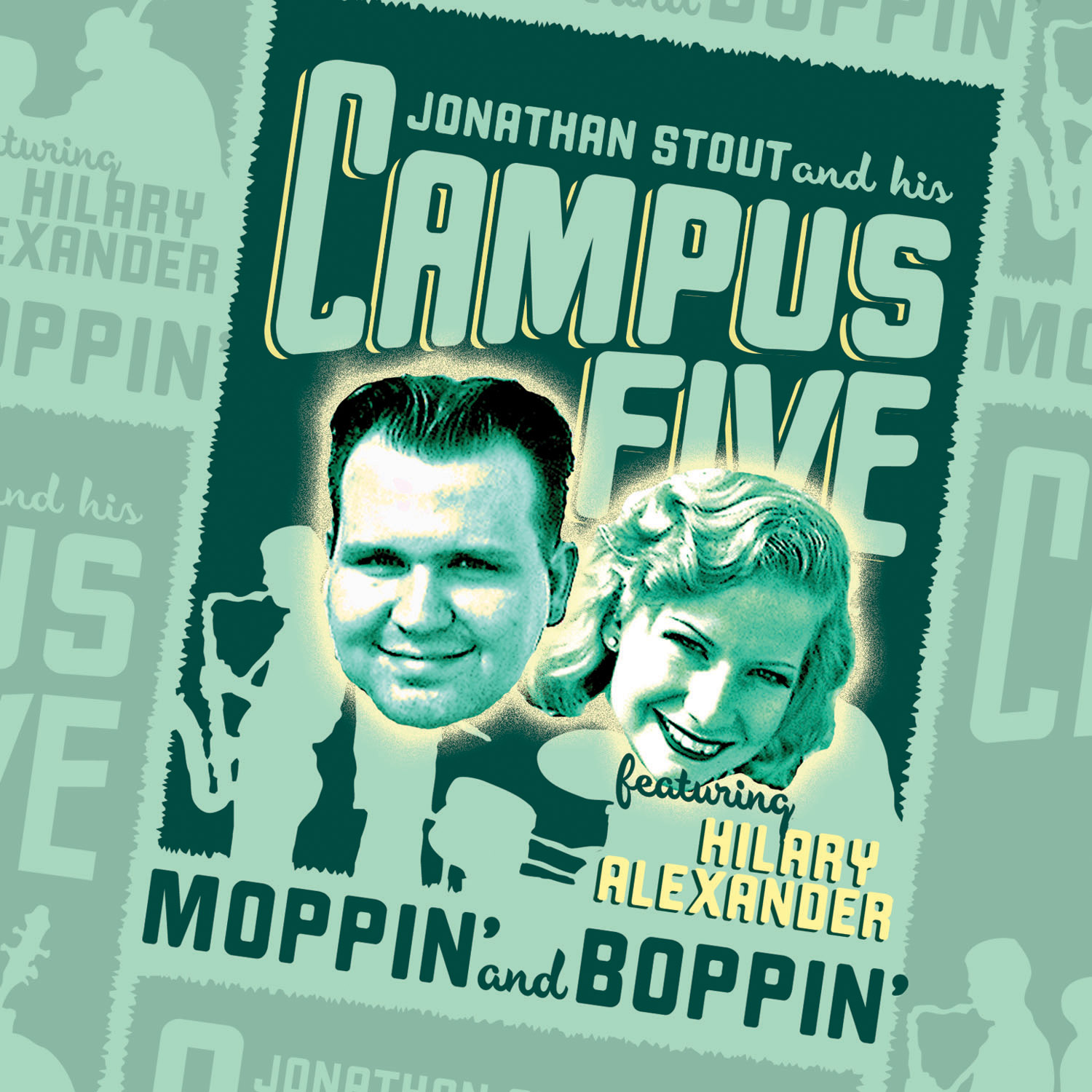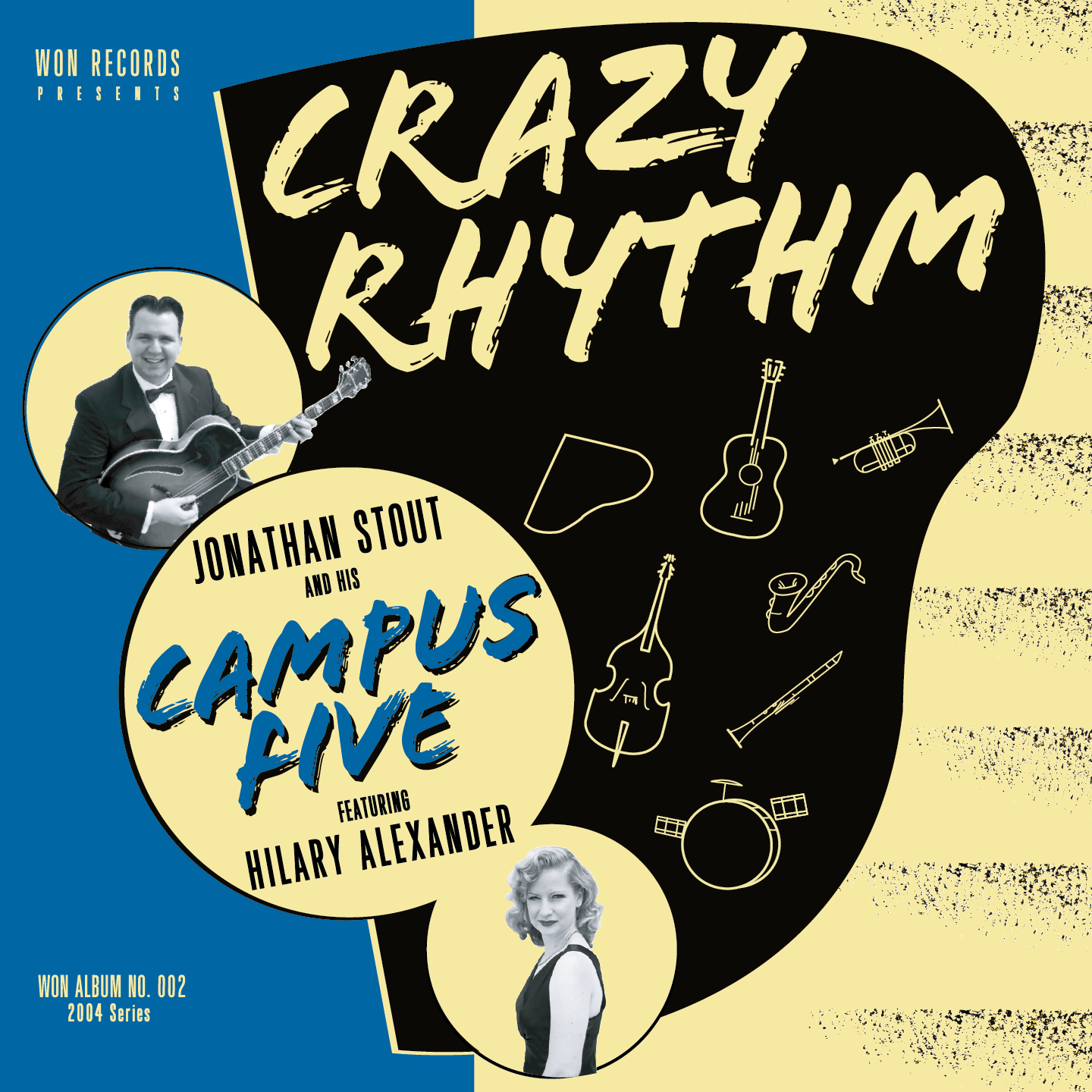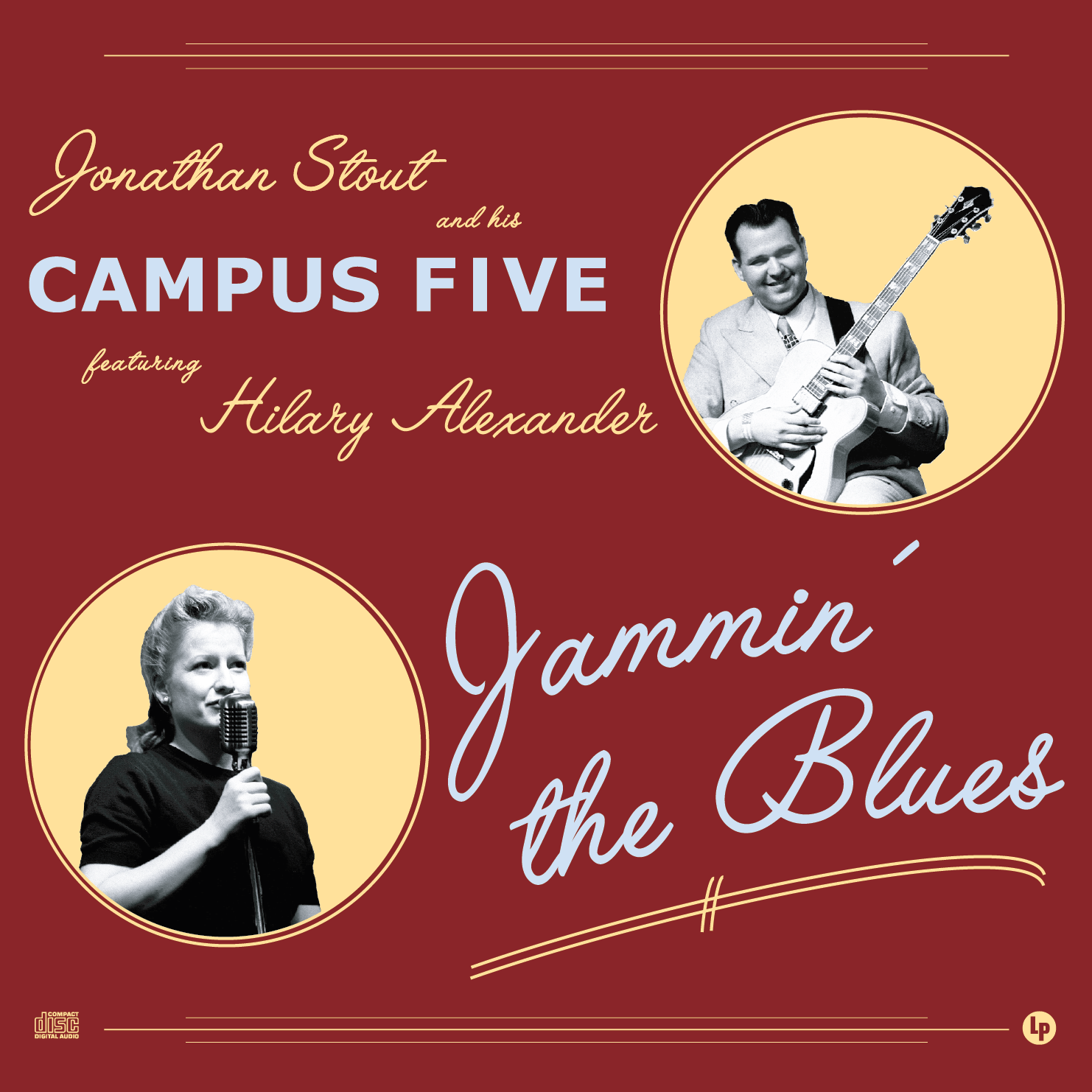Video: "Tea for Two"
/Here's another video of me jamming over some backing tracks, this time "Tea for Two." I don't quite understand the pink cast to the lighting, but like I mentioned, I'm still getting things worked out.
Again the set up is my ES-150 through the EH-160, and playing over backing tracks the I've published here and that can be found at www.soundcloud.com/campusfive.
"Tea for Two" is a tune I first learned to play with the Bonebrake Syncopators. Again, it was another tune that confounded me for a while, until I figured out how to approach it. There was something about the ii-V's that I could only approach from one direction, the most obvious one: arpeggios overtly spelling out the changes. It just never felt good to play over.
One of the best ways to learn how to approach a tune is to learn how one of your favorite players approaches it, so I learned Charlie Christian's two choruses (from the 1939 Jerry Jerome Jam-Session). After learning Charlie's solo, it totally opened my eyes about the changes. Here's a PDF of the leadsheet: Tea for Two (PDF)
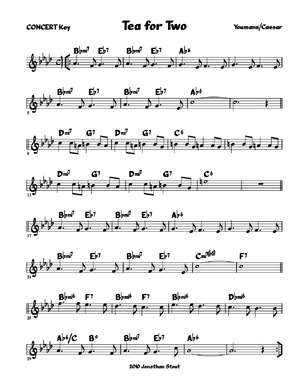
click to enlarge
"Tea for Two" is a basically ABAC, though the last two bars of the second A are slightly different to set up the C. The A and B sections are both a series of ii-V-I's, first in Ab, then in C. What I took from Charlie was that it made much better sense to simplify the ii-V's into just V chords. Even then, he would sometime just play I-chord based blues lick over the V chord.
Simplifying the ii-V's was especially helpful when the B section comes up. For some reason, transitioning from Ab6 to Dm7 made no sense. But starting on a G7 V-chord lick made sense. Lastly, the key change back to Ab - I always had trouble trying voice lead from the C to the Eb7. Charlie just played one lick over one, and then one lick over the other. Boom.
The second A section is the same, except for the last two bars: a iim7b5-V7 to Bbm. I find that outlining the three chords is again tilting at windmills. I dimished lick over both the ii and V is easier to deal with.
Finally the C section is a Bbm vamp (ii) with a Dbm (iv) resolving back the Ab (I) chord - just like in Limehouse Blues, and several other tunes. The last four bars is another I-iii˚-ii-V sequence, like in "Swing that Music" and many other tunes.
